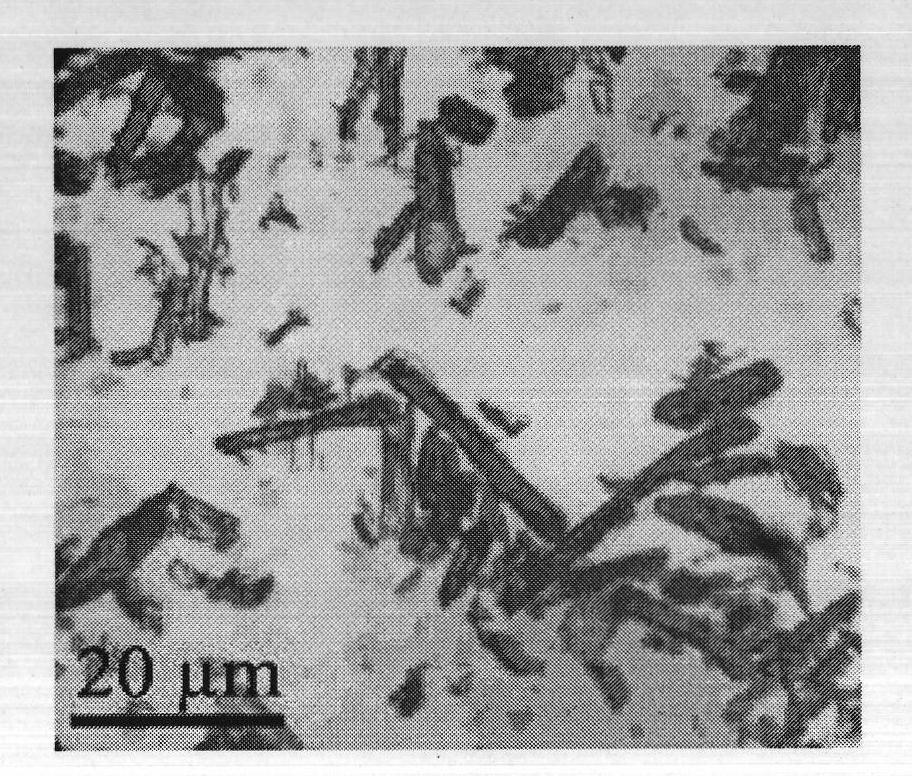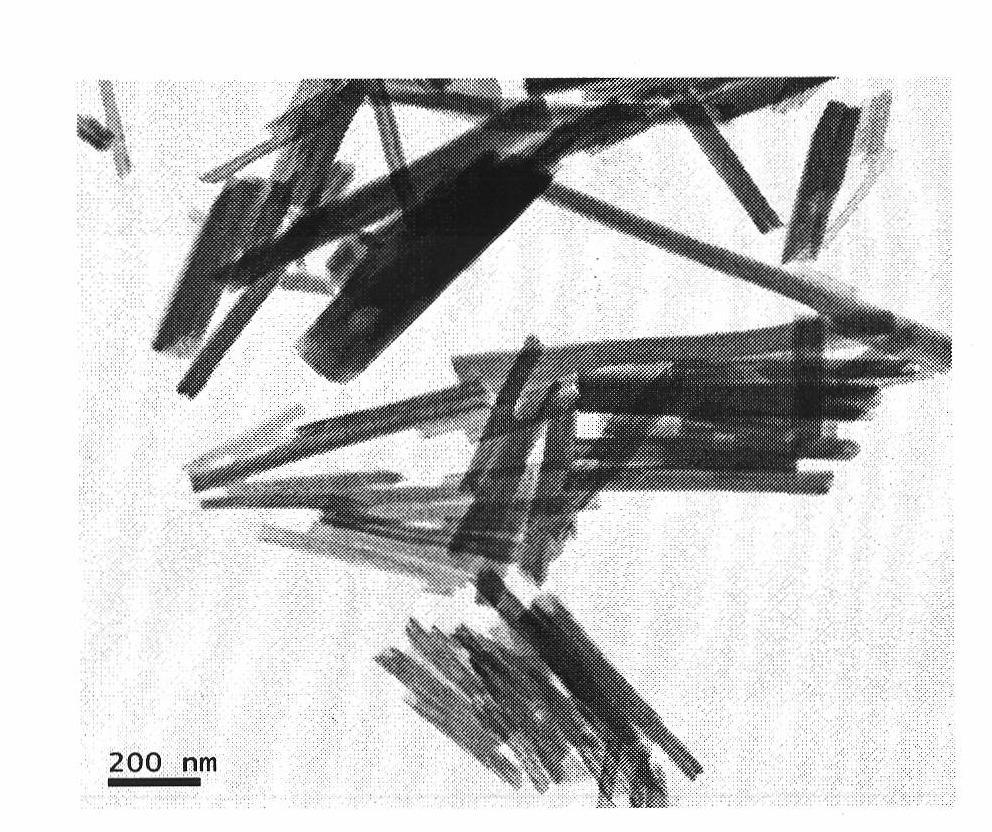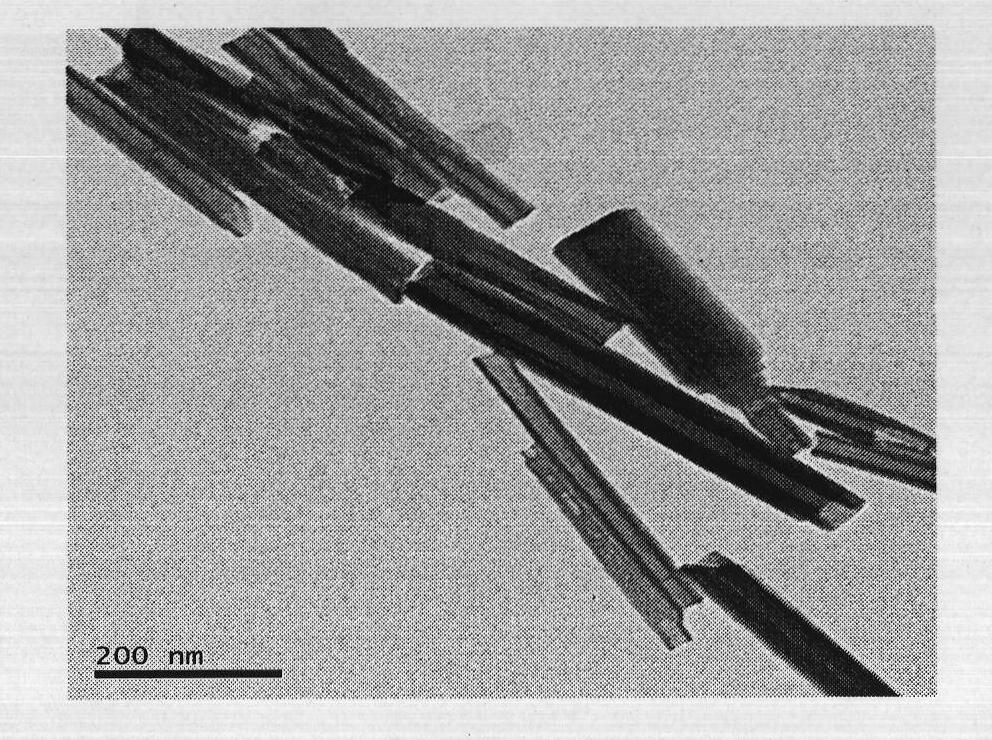Preparation method of cellulose nanocrystal/carbon black/natural rubber composite
A nano-microcrystalline and natural rubber technology, applied in the field of rubber, can solve the problems of high pollution, high energy consumption, dependence on petroleum resources, etc., and achieve the effect of increasing cross-linking density, low cost, and superior mechanical properties
- Summary
- Abstract
- Description
- Claims
- Application Information
AI Technical Summary
Problems solved by technology
Method used
Image
Examples
Embodiment 1
[0061] In the first step, 169.5g mass fraction of 59% natural rubber latex (equivalent to 100g dry rubber) is placed in a 1L beaker, and stirred at room temperature for 15min;
[0062] In the second step, at 60°C, 5 g of nanocrystalline cellulose was added to 100 g of ethanol solution with a mass fraction of 95%, and the pH was adjusted to 5 with acetic acid, 0.5 g of coupling agent A151 was added, and the reaction was stirred for 90 min;
[0063] The third step is to add nano-microcrystalline cellulose to the evenly stirred natural rubber latex, and stir and mix at room temperature for 45 minutes;
[0064] The fourth step is to pour the well-stirred natural rubber / nano-microcrystalline cellulose mixture into the tray, and spray 10% CaCl in mass fraction 2 The solution was demulsified, co-precipitated, washed for 20 hours, and dried in a blast drying oven at 60°C to constant weight to obtain a solid natural rubber / nanocrystalline cellulose mixture;
[0065] The 5th step carri...
Embodiment 2
[0069] In the first step, 169.5g mass fraction of 59% natural rubber latex (equivalent to 100g dry rubber) is placed in a 1L beaker, and stirred at room temperature for 15min;
[0070] In the second step, at 60°C, 0g, 5g, 10g, 15g, 20g, and 25g of nanocrystalline cellulose were added to 0g, 50g, 100g, 150g, 200g, and 250g of ethanol solutions with a mass fraction of 95% as For 6 samples, adjust the pH to 7, add 0g, 0.5g, 1.0g, 1.5g, 2.0g, 2.5g of coupling agent Si-69 to the 6 samples respectively, and stir for 90min;
[0071] The third step is to add nano-microcrystalline cellulose to the evenly stirred natural rubber latex, and stir and mix at room temperature for 45 minutes;
[0072] The fourth step is to pour the well-stirred natural rubber / nano-microcrystalline cellulose mixture into the tray, and spray it with 10% CaCl 2 The solution is demulsified, co-precipitated and washed for 20 hours, and dried in a blast drying oven at 60°C to constant weight to obtain a solid natu...
Embodiment 3
[0075] In the first step, 169.5g mass fraction of 59% natural rubber latex (equivalent to 100g dry rubber) is placed in a 1L beaker, and stirred at room temperature for 20min;
[0076] In the second step, at 60°C, 0g, 5g, 10g, 15g, 20g, and 25g of nanocrystalline cellulose were added to 0g, 50g, 100g, 150g, 200g, and 250g of 95% ethanol solution (NCC's mass fraction) respectively. The mass is 10% of the mass of the ethanol solution), adjust the pH to 5 with acetic acid, then add 0 g, 0.5 g, 1.0 g, 1.5 g, 2.0 g, 2.5 g of coupling agent NDZ102 respectively, and stir for 120 min;
[0077] The third step is to add nano-microcrystalline cellulose to the evenly stirred natural rubber latex, and stir and mix at room temperature for 60 minutes;
[0078]The fourth step is to pour the well-stirred natural rubber / nano-microcrystalline cellulose mixture into the tray, and spray it with 10% CaCl 2 The solution was demulsified, co-precipitated, and washed for 24 hours, and dried in a blast...
PUM
| Property | Measurement | Unit |
|---|---|---|
| Tear strength | aaaaa | aaaaa |
Abstract
Description
Claims
Application Information
 Login to View More
Login to View More - R&D
- Intellectual Property
- Life Sciences
- Materials
- Tech Scout
- Unparalleled Data Quality
- Higher Quality Content
- 60% Fewer Hallucinations
Browse by: Latest US Patents, China's latest patents, Technical Efficacy Thesaurus, Application Domain, Technology Topic, Popular Technical Reports.
© 2025 PatSnap. All rights reserved.Legal|Privacy policy|Modern Slavery Act Transparency Statement|Sitemap|About US| Contact US: help@patsnap.com



